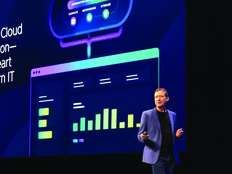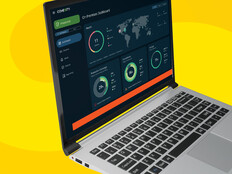Hyperconverged infrastructure remains the gold standard for federal agencies looking for simpler ways to manage their data centers. About 80 percent of enterprises in general say they’ve expanded HCI deployments at the edge to help connect disparate tools and technologies.
But is this approach a viable cloud alternative?
Hyperconverged infrastructure is a software-defined approach that unifies key components, including storage, computing, networking and management. It essentially allows agencies to manage multiple infrastructure functions from a single control panel.
HCI and cloud also share the same core process of virtualization. By creating virtual representations of servers, storage architecture and network connections, cloud services and HCI solutions allow agencies to easily manage and scale their IT environments.
Click the banner below to learn how IT modernization supports digital government.
The chief difference between HCI and cloud is location. While agencies primarily deploy HCI deployments on premises, cloud solutions depend on offsite resources. As a result, clouds often outpace HCI when it comes to add-on services: Whenever agencies need new applications or tools, they simply add to existing frameworks for an additional cost.
HCI solutions, by contrast, excel at protecting and managing data. Because hardware sits on-premises under the IT team’s direct control, agencies benefit from increased visibility and data security.
HCI and Cloud Have Different Purposes and Costs
HCI and cloud fill different roles in the IT environment. As a result, the question for IT to solve shouldn’t really focus on whether to replace HCI with cloud or avoid cloud for HCI, but instead on how to ensure the technology fits the use case.
For example, HCI allows more streamlined management of large data sets and lays the groundwork for agencies to shift specific pieces of their infrastructure to the cloud. Cloud computing also makes it possible to handle rapidly growing data sets.
Another difference is cost. In the cloud, you don’t pay for hardware or maintenance, you pay only for resource consumption.
HCI deployments offer a clearer picture of overall costs. Agencies can choose to buy or lease hardware and can plan regular maintenance and replacement. In the cloud, spending steadily increases along with use, which means that the total costs for cloud can gradually rise higher than the cost for HCI.
80%
The percentage of enterprises that are expanding HCI deployments at the edge
Source: blogs.vmware.com, "Hyperconverged Infrastructure (HCI) Use is Growing at the Edge, According to 451 Research," July 12, 2022
HCI and Cloud Can Complement Each Other
It’s worth noting that this isn’t an either/or situation. Agencies can — and should — make use of cloud and HCI solutions simultaneously.
HCI excels at data management and control, making it ideal for data sources that are relatively static or that have a steady rate of growth. Cloud computing, meanwhile, is naturally dynamic, allowing agencies to easily add or remove services as needed.
When used in concert, HCI and cloud offer a two-way ecosystem that facilitates ongoing IT evolution.
So, is HCI a viable cloud alternative? Yes and no. Yes, in that HCI offers a cloudlike experience in terms of scalability and management. No, in that on-premises solutions will rarely be as dynamic and adaptable as those in the cloud.
Instead of thinking of HCI as an alternative to the cloud, agencies should consider HCI an analog: a solution that’s similar but not identical to the cloud. That makes it possible to achieve the best of both worlds.
Work on the Edge
Hyperconverged infrastructure can help tackle challenges agencies face when using edge computing:
- Limited and unconventional space. Edge locations are often added to existing infrastructure.
- Edge infrastructure can be costly.
- Troubleshooting can be tricky, and most edge sites do not have separate IT staff.
- Core data centers often have stronger physical security than edge locations.
- Different workload characteristics. Edge locations have more applications with different needs than core data centers.
Illustration by Jonathan D. Reinfurt












